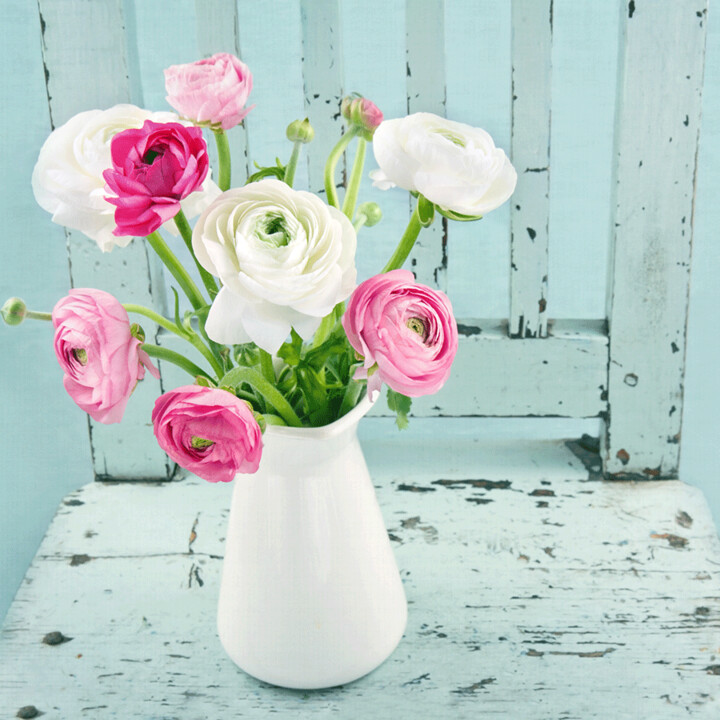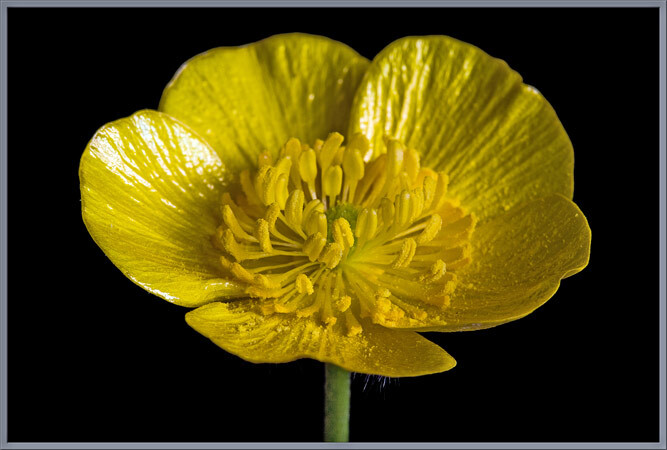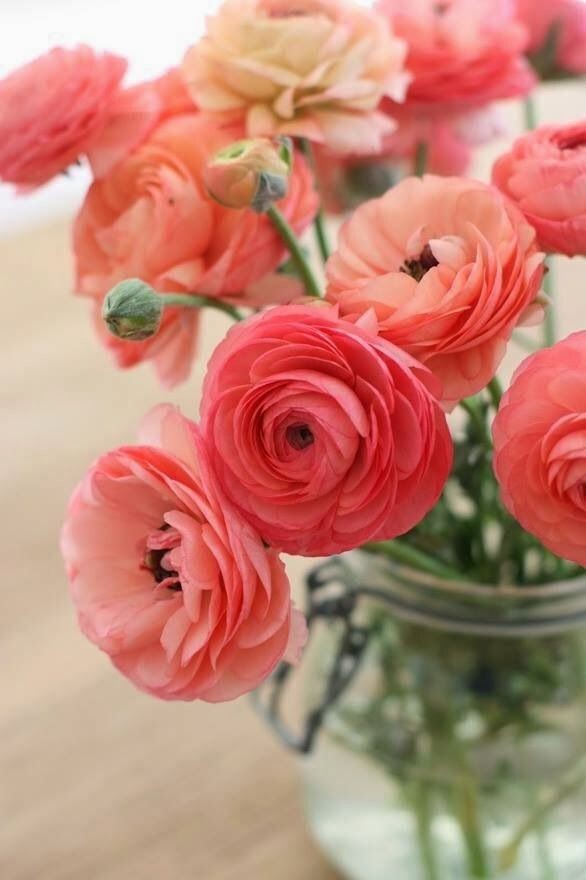
The Ranunculus flowers come from a family of 600 species.
Family members include Spearworts, Buttercups and Water Crowfoots to name but a few. The petals are quite often highly glossy, especially on the yellow variants of this plant.
Many Ranunculus species provide food to various plants and animals, whilst others are popular ornamental flowers – especially the brighter and bolder versions.
Water Crowfoots
This particular species of plant grows in still or running water. Water Crowfoots have two different types of leaf, including both broader floating leaves and thread-like leaves. In certain species, a third leaf is often apparent.

Buttercups
Buttercups are mostly perennial, and infrequently, biannual or annual, aquatic, herbaceous or terrestrial plants. Certain types have rosette-style leaves, which sit at the base of the stem.

Hermaphrodite Flowers
These flowers traditionally have five green sepals. On top of this, they boast five petals that are yellow, greenish, or white in hue. Some species have petals that are tinted with red, purple or pink. A nectary gland is found at the bottom of each petal and is sometimes covered by a scale.
Where does the name come from?
The name Ranunculus is Latin for ‘little frog’ and is thought to signify the many species of this plant which are found near water, just like frogs.
The name buttercup is said to originate from a myth and many to this day believe this particular plant gives butter its distinguishing creamy colour. This is far from the case, as the Buttercup is in actual fact harmful to both cows and other livestock.
Another myth, enjoyed by many in their childhood is the popular children’s game, which includes holding a buttercup up to your chin. If a yellow reflection is apparent, it is said to mean you have a penchant for butter.

Uses in Medicine
Ranunculus is traditionally added to Asian medicines used to treat anti-rheumatism, rubefacient and intermittent fever, as it contains anemonin and Protoanemonin.
Toxicity
All Ranunculus species are poisonous to animals, especially livestock including cattle and horses. However, they are said to taste extremely unpleasant and cause an instant blistering of the mouth, which means they’re often left untouched. Indications that livestock have eaten this plant include unwarranted salivation, gastrointestinal tract, bloody diarrhea, mucous membranes, severe blistering of the mouth and colic.
How to plant and care for Ranunculus
Often sold as cut flowers, ranunculus species make a perfect choice for a bouquet. They’re also a great option for the garden as they boast brilliantly hot-hued blooms. Most variants of ranunculus will reach 15 inches in height. In order to ensure ranunculus blooms to its full potential, you will need to know how to plant and care for them.
It’s important to consider climate when planting Ranunculus – they tend to prefer a sun-drenched location. However, if you live in an extremely humid climate, they will grow in shade too. If you’re planting this flower in a cooler climate, it’s wise to store the bulbs somewhere warm over the winter months.
When you’re ready to plant your ranunculus, opt for a spot when the soil drains well. Most importantly, ensure the soil is healthy. The ranunculus specie prefers rich, sandy ground.
How many flowers will my plant produce?
You can quite often tell how many flowers you will get by analysing the bulb.
The bigger the bulb, the more flowers it will produce.
Caring for Ranunculus
It’s important to feed your plants every 14 days with plant feed. You should begin feeding your ranunculus as soon as the first buds appear. As well as feeding your plants, you must also water them. Too little water can be just as detrimental as too much water. It’s recommended you water your bulbs just after planting them.
You should continue this routine every 10 to 14 days until the first signs of foliage start to appear. Once you see leaves, try to water them every week. When winter arrives, the ranunculus will fall dormant and will no longer require water.
Protect your ranunculus from pests
Just like many plants, ranunculus can fall pray to pests. Insects that attack this particular species of plant include slugs and aphids.
From combatting slugs with slug pellets, to using an aphid spray or insecticidal soap, there are things you can do to prevent your plants from being harmed.